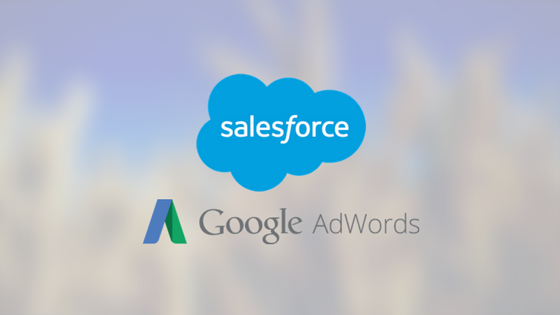The Forgotten Social Networks: It’s Not ALWAYS About Twitter, Facebook, and LinkedIN
If you follow the social media trend back to its roots at the turn of the century, you’ll find a trail of forgotten websites, misguided concepts and copycats that have come and gone over the years. I remember first jumping on the bandwagon back in 2003 when someone sent me an invitation to Friendster. From there, I was hooked on the potential of what could be accomplished with social networking. A few years later, MySpace surged in popularity and suddenly Friendster was forgotten. Within two years however, it was obvious that the move was going to be to Facebook, and MySpace became a ghost town almost overnight.
Clearly a pattern was forming, and soon the Internet was rife with sites that were little more than on-line time capsules of long-abandoned discussions and profiles. In fact, as an early-adopter of just about every social media site and new idea, I have probably left dozens, perhaps even hundreds, of such profiles scattered all over the web. Some of these sites I still mourn (Jaiku, Digg, Frappr), others I was glad to see go (Plurk, iLike, Microsoft Spaces, Yahoo 360).
The common sense rule of social media success is simply that people go where their friends are, and businesses concentrate their efforts where the people are. For that reason alone, do not expect any drastic shifts in power from the current triumvirate of LinkedIN, Facebook, and Twitter in the near future. This makes social media strategy easy for most businesses, since maintaining a presence on those sites can be done with minimal expense or thought. For companies willing to put a bit more time and effort into their social media strategy, however, there are a number of “secondary” sites that, depending on your business model and amount of time you’re prepared to put forth, could provide a much better return in brand exposure and convertible prospects.
Here are just four of my favorites:
Foursquare
Why Is This a Great Site? Despite relying heavily on a “sooo-three-years-ago” strategy of gamification and badges, Foursquare remains useful for its easy integration into Twitter and Facebook feeds, as well as the fact that many of the heavy-influencers in social media still use the site. While you may have a loyal following of customers who frequent your business regularly, they do not always mention you by name on their Twitter and Facebook feeds. A few well-placed specials or incentives through Foursquare will give them that motivation. In addition, the metrics provided to “place owners” provide valuable insight into their customers and their behaviors.
Who Should Be Here? Any brick and mortar business that relies on walk-in traffic, or who is looking to expand their brand name cheaply through buzz-based marketing.
43Things
Why Is This a Great Site? 43Things has long been one of my favorite sites. The premise is simple: You create an account, list out 43 things you would like to do or accomplish, and then share them. Users of the site (you don’t need to “add” or “friend people” to participate) can then offer advice, make recommendations, or just cheer you on. From a business perspective, the advantage of being able to search and find people who have volunteered their purchasing plans or pain points should be obvious. Do you sell cars? Simply look for people who list, “Buy a car,” among their goals. Do you provide career counseling services or professional training? There are literally thousands of people who have, “Get a better job,” on their list of top priorities.
Who Should Be Here? Just about any B2C organization should be able to easily identify their target market on this site. While the effort to interact individually with each person is time consuming, it should be quite reasonable for those people who sell large ticket items or who rely on long-term, subscription-style relationships with clients.
FriendFeed
Why Is This a Great Site? I constantly lament that FriendFeed never caught on with the masses. I believe it had the potential to take the best parts of Facebook’s wall (articles, interesting posts, relevant tweets, original long-form content) and leave behind the worst parts (endless re-posts of the same content, game badges, kitten pictures, the need for “EdgeRank” maintenance). While not the most-popular of the existing social network sites, FriendFeed has enjoyed a steady, loyal audience of long-form content creators and consumers that shun Facebook for the previously-listed reasons. In addition, because many social network advocates do not duplicate their content between services, it gives an excellent aggregate view of an individual or company’s collected output.
Who Should Be Here? Companies seeking to engage a technically savvy audience; companies who sell a product or service that requires extensive research or analysis; companies selling in a new niche that requires extensive customer education; companies with a widely diverse social media presence who are wary of creating redundant content across that network.
Local Networking Sites
Why Are These Great Sites? Most metropolitan regions have online groups focused around networking in the local space. In Central Indiana we have “Smaller Indiana,” “The Code and Coffee Crowd,” and “Indy Tweetup,” among others. Because they are specialized, these sites are great ways to get your name and company noticed without the low “signal to noise ratio” of the big three social networks. In addition, many offer in-person meet-ups or events around specialized disciplines that are ideal for gaining valuable face-to-face time with potential partners and customers you’ve already met through the site.
Who Should Be Here? Small companies with a localized customer base; companies focusing on networking or partnering with local thinkers; companies seeking to expand their social media presence through guest blogging.












